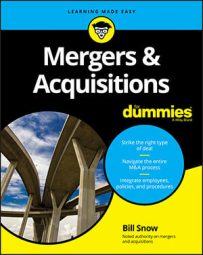A letter of intent (LOI) is basically an M&A form of a marriage proposal from Buyer. As the name implies, the LOI lays out the intent of both parties: Seller states she is willing to sell for the proposed terms, and Buyer states what he is willing to pay.
They are both agreeing to move forward to close a deal based on the terms in the document. It’s not binding, which means it’s not enforceable in court (well, except for the parts about confidentiality) and it doesn’t bind Buyer to the deal. In fact, either side can still walk away for any reason.
Buyer submits the LOI to Seller. Buyer’s lawyer may be the one to actually craft the LOI, although the lawyer works under the direction of Buyer’s advisor to make sure the business terms are what Buyer wants. After the LOI is ready to be submitted, sending it via e-mail is perfectly permissible.
The LOI is an important step because it lays out the basics of the final deal: the purchase price and terms, closing date, length of exclusivity, approvals, and much, much more. However, the LOI isn’t necessarily the final deal. Rather, it’s the framework or roadmap for that final deal. Based on what each side discovers during due diligence, and/or whether the profits of the company decline, the deal may change.
For most people, the transaction to buy or sell a business will be the biggest deal of their lives and careers. It usually involves lots of money and even more risk. Given the size and complexity of a company, one bad merger or acquisition may well ruin you. Because of the risk of buying or selling a company, you need to take gradual steps.
In M&A, the LOI acts as an important step in closing the deal. It defines the terms and the timing, and Seller agrees to stop talking to other potential Buyers. And assuming the company passes the inspection and assuming Buyer has (or can get) the dough, the deal closes.
Although they’re similar in some ways, an LOI is different from an indication of interest (IOI). Both documents are part of the process of buying or selling a company; however, the LOI lays out more specific terms.
An IOI typically has a valuation range; an LOI has a specific valuation. An IOI doesn’t ask for exclusivity, but an LOI usually does ask for exclusivity from Seller. Think of it this way: An IOI is asking for a date, while an LOI is a marriage proposal.
The LOI’s more specific terms provide protection for Buyer. The LOI allows Buyer to get serious about closing a deal without having to worry about another Buyer swooping in at the last minute and stealing it. The LOI also allows Buyer to get a close look at the company without having to lay out the money to buy the company.
Exclusivity is a key consideration. An LOI usually includes a lock-up period where Seller is out of the market — that is, unable to speak with other Buyers about doing a deal. Sellers should grant exclusivity very carefully and should do everything possible to limit the amount of time they’re prevented from speaking to other Buyers.

